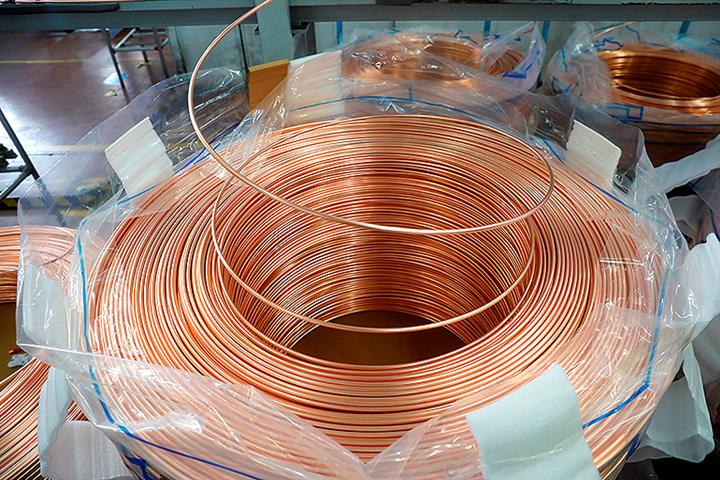 Copper Falls After China Moves to Release State Commodity Reserves
Copper Falls After China Moves to Release State Commodity Reserves(Yicai Global) June 18 -- Copper fell to a two-month low yesterday after China said it will release state reserves of that and other metals into the market. Fluctuations in the price of the commodities involved will increase, analysts predicted.
Copper traded on the London Metal Exchange was at USD9,465 per ton yesterday (Beijing time), while aluminum fell to a two-week low of USD2,413 a ton.
The LME copper price recently broke through a high of USD10,700, driven by a liquidity boom, intense speculation and the green revolution, Jin Yidong, a commodities analyst with BOC International, told Yicai Global.
On June 16, the National Food and Strategic Reserves Administration said it would release national stocks of copper, aluminum and zinc into the market.
China has had initial success in restraining the surge in commodity prices, with the cost of raw materials such as copper, iron ore, and steel having fallen to varying degrees after a series of measures to dampen market speculation, the country’s top economic planning agency said yesterday.
To safeguard normal market order, the National Development and Reform Commission stepped up oversight of the spot and futures markets for bulk commodities, probed market transactions, interviewed key industry players and associations, an NDRC spokesperson said, adding that it also looked into and verified clues about suspected market manipulation and price hikes.
Regulatory measures has led to a significant drop in prices. At the same time, the US Federal Reserve’s expectations for a shrinking balance sheet triggered profit-taking, Jin added. The market still expects medium- and long-term demand for copper.
Surging Copper
Prices of the metal have risen spectacularly over the past 12 months, with LME copper up more than 120 percent, and that on the New York Mercantile Exchange surging around 80 percent as demand far outstrips supply, according to Tony Sycamore, an analyst with City Index.
The buoyant new energy vehicle market has fired up demand as EVs use three times more copper in their engines than fuel-powered cars, he said, noting that the market is likely to continue to face a structural supply and demand imbalance.
By the end of last month, the Bloomberg commodity index had jumped nearly 25 percent this year, and up 60 percent from a low in April last year. The price of copper surged 125 percent from a March 2020 low, while that of Brent crude oil soared nearly 280 percent from a low of just below USD20 a barrel in April 2020.
“Prices of the US-priced crude oil, basic metals such as copper, aluminum, lead and zinc as well as agricultural products, including corn and bean pulp, could jump further,” according to AVIC Trust macro-strategy supervisor Wu Zhaoyin. “Supply, demand and currency factors still favor an increase, but the rise has entered the tail-end stage.”
“The China-priced ferrous metal industry chain (such as deformed steel bars, coal, coke and charcoal) has entered the top range and will face big fluctuations at high prices,” he said. “At the same time, market demand for these products is not strong because of peak carbon dioxide emissions and carbon neutralization.
“Policies have been adjusted moderately recently, and the currency side is increasingly unfavorable to a rise in commodity prices.” Wu said. “Prices will go down after fluctuating at high levels, and the space for such downward trend is large.”
Editor: Peter Thomas